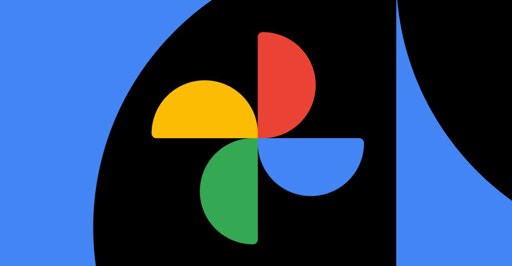Half of companies planning to replace customer service with AI are reversing course
-
There's awesome AI out there too. AlphaFold completely revolutionized research on proteins, and the medical innovations it will lead to are astounding.
Determining the 3d structure of a protein took yearsuntil very recently. Folding at Home was a worldwide project linking millions of computers to work on it.
Alphafold does it in under a second, and has revealed the structure of 200 million proteins. It's one of the most significant medial achievements in history. Since it essentially dates back to 2022, we're still a few years from feeling the direct impact, but it will be massive.
Sure. And AI that identifies objects in pictures and converts pictures of text into text. There's lots of good and amazing applications about AI. But that's not what we're complaining about.
We're complaining about all the people who are asking, "Is AI ready to tell me what to do so I don't have to think?" and "Can I replace everyone that works for me with AI so I don't have to think?" and "Can I replace my interaction with my employees with AI so I can still get paid for not doing the one thing I was hired to do?"
-
That's part of the problem isn't it? "AI" is a blanket term that has recently been used to cover everything from LLMs to machine learning to RPA (robotic process automation). An algorithm isn't AI, even if it was written by another algorithm.
And at the end of the day none of it is artificial intelligence. Not to the original meaning of the word. Now we have had to rebrand AI as AGI to avoid the association with this new trend.
“AI” is a blanket term that has recently been used to cover everything from LLMs to machine learning to RPA (robotic process automation).
Yup. That was very intentionally done by marketing wanks in order to muddy the water. Look! This
computer program, er we mean "AI" can convert speech to text. Now, let us install it into your bank account." -
Defining contextual relationship between words sounds like predicting the next word in a set, mate.
Only because it is.
-
Defining contextual relationship between words sounds like predicting the next word in a set, mate.
Not at all. It's not "how likely is the next word to be X". That wouldn't be context.
I'm guessing you didn't watch the video.
-
There's awesome AI out there too. AlphaFold completely revolutionized research on proteins, and the medical innovations it will lead to are astounding.
Determining the 3d structure of a protein took yearsuntil very recently. Folding at Home was a worldwide project linking millions of computers to work on it.
Alphafold does it in under a second, and has revealed the structure of 200 million proteins. It's one of the most significant medial achievements in history. Since it essentially dates back to 2022, we're still a few years from feeling the direct impact, but it will be massive.
Determining the 3d structure of a protein took yearsuntil very recently. Folding at Home was a worldwide project linking millions of computers to work on it.
Alphafold does it in under a second, and has revealed the structure of 200 million proteins. It's one of the most significant medial achievements in history. Since it essentially dates back to 2022, we're still a few years from feeling the direct impact, but it will be massive.
You realize that's because the gigantic server farms powering all of this "AI" are orders of magnitude more powerful than the sum total of all of those idle home PC's, right?
Folding@Home could likely also do in it in under a second if we threw 70+ TERAwatt hours of electricity at server farms full of specialzed hardware just for that purpose, too.
-
If Bezos thinks people are just going to forget about not getting a $65 item that they paid for and still shop at Amazon, instead of making sure they either get their item or reverse the charge, and then reduce or stop shopping on Amazon but of his ridiculous hassles, he is an idiot.
The airline industry does this with hundreds of dollars worth of airplane tickets all the time.
-
This post did not contain any content.
But but but, Daddy CEO said that RTO combined with Gen AI would mean continued, infinite growth and that we would all prosper, whether corposerf or customer!
-
Man, if only someone could have predicted that this AI craze was just another load of marketing BS.
/s
This experience has taught me more about CEO competence than anything else.
Almost like those stupid monkey drawings that were "worth money." Lmao.
-
I was thinking about this the other day and don't think it would happen any time soon. The people who put the CEO in charge (usually the board members) want someone who will make decisions (that the board has a say in) but also someone to hold accountable for when those decisions don't realize profits.
AI is unaccountable in any real sense of the word.
AI is unaccountable in any real sense of the word.
Doesn't stop companies from trying to deflect accountability onto AI. Citations Needed recently did an episode all about this: https://citationsneeded.medium.com/episode-217-a-i-mysticism-as-responsibility-evasion-pr-tactic-7bd7f56eeaaa
-
AI is unaccountable in any real sense of the word.
Doesn't stop companies from trying to deflect accountability onto AI. Citations Needed recently did an episode all about this: https://citationsneeded.medium.com/episode-217-a-i-mysticism-as-responsibility-evasion-pr-tactic-7bd7f56eeaaa
I suppose that makes perfect sense. A corporation is an accountability sink for owners, board members and executives, so why not also make AI accountable?
I was thinking more along the lines of the "human in the loop" model for AI where one human is responsible for all the stuff that AI gets wrong despite it physically not being possible to review every line of code an AI produces.
-
A good systems analyst can effectively translate user requirements into accurate statements, does not need to be a programmer. Good systems analysts are generally more adept in asking clarifying questions, challenging assumptions and sussing out needs. Good programmers will still be needed but their time is wasted gathering requirements.
Most places don't have all good system analysts.
-
And a lot of burnt carbon to get there

Have you ever played a 3D game
-
A good systems analyst can effectively translate user requirements into accurate statements, does not need to be a programmer. Good systems analysts are generally more adept in asking clarifying questions, challenging assumptions and sussing out needs. Good programmers will still be needed but their time is wasted gathering requirements.
What is a systems analyst?
I never worked in a big enough software team to have any distinction other than "works on code" and "does sales work".
The field I was in was all small places that were very specialized in what they worked on.
When I ran my own company, it was just me. I did everything that the company needed to take are of.
-
What is a systems analyst?
I never worked in a big enough software team to have any distinction other than "works on code" and "does sales work".
The field I was in was all small places that were very specialized in what they worked on.
When I ran my own company, it was just me. I did everything that the company needed to take are of.
Systems analyst is like a programmer analyst without the coding. I agree, in my experience small shops were more likely to have just programmer analysts. Often also responsible for hardware as well.
If it's just you I hope you didn't need a systems analyst to gather requirements and then work with the programmer to implement them. If you did, might need another kind of analysis.

-
That can be accomplished with basic if-else decision tree. You don't need the massive resource sink that is AI
The kind of AI I mentioned isn’t a massive resource sink. I can run that sort of thing locally on my own computer. They don’t need supercomputers for level 1 material.
-
Whenever I call in to a service because it's not working, when I get stuck talking to a computer, I'm fucking furious. Every single AI implementation I've worked with has been absolute trash. I spam click zero and yell "operator" when it says it didn't hear me or asks for my problem, and I've 100% of the time made it through to a person. People also suck, but they at least understand what I'm saying and aren't as patronizing.
This was all via chat so much faster than the painful voice prompts. I agree those are terrible.
-
This was all via chat so much faster than the painful voice prompts. I agree those are terrible.
I love text chats with a person, but I feel most of the time that when I start with a text chat with a bot and get transferred to a real agent, they ask all of the same questions, like info gathering name, phone, email, etc. it's almost as if the real people can't see the transcript of the conversation I had with the bot.
The thing is, most of those chats that I've worked with for years are simple chat bots, not AI, and those are plenty effective for their purpose. They have their preset question tree and that's it. I may also be a little skewed in my experiences compared to a lot of people, since I've worked in IT for over a decade, so often when in reaching out to service, it's something more advanced where I need a person to actually talk to. Also, anything billing or containing private information. I under no circumstances want that fed into an LLM or accessible to an AI agent so it can be shared accidentally to someone else.
-
It was a joke, mate. A simple jest. A jape, if you will
Most jokes need to be recognizable as funny?
Like if you say the word cucked, ever, I'm going to assume you're serious and an imbecile and I would be right to do that, no?!





